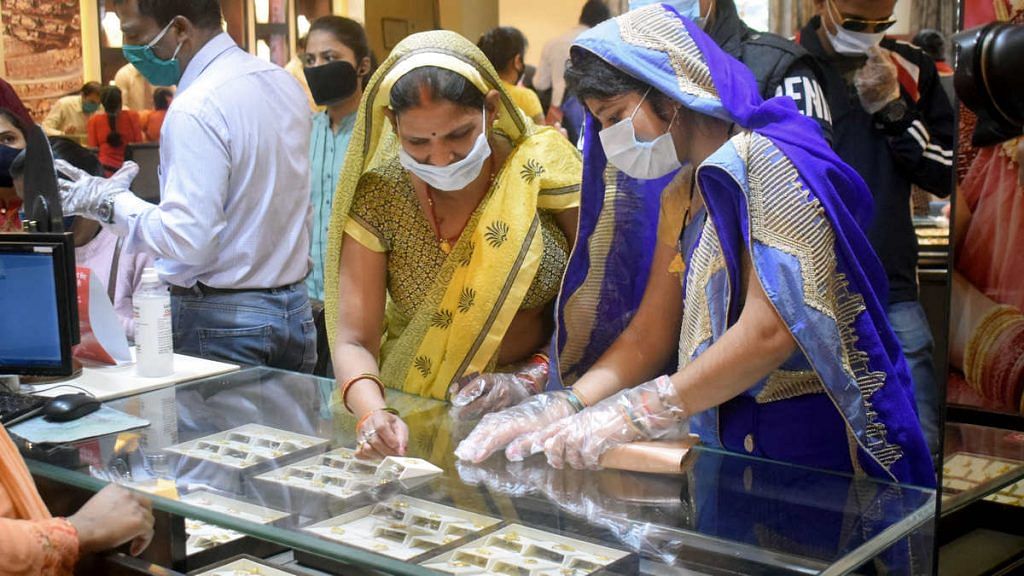New Delhi: India’s retail inflation based on the Consumer Price Index (CPI) has consistently registered above 6 per cent in the last few months, hitting a nearly six-and-a-half-year high of 7.6 per cent in October.
But the double-digit food inflation isn’t the only thing driving up the prices, the Covid-19 pandemic has had an impact too.
Many segments like transportation and communication, health, and personal care and effects have witnessed sharp price increases, which economists attribute to the pandemic and its impact on people’s lifestyles.
Also read: Costlier manufactured items push WPI inflation to 8-month high of 1.48% in October
What’s causing high inflation?
Transportation and communication inflation, which has 8.6 per cent weightage in the overall CPI, has been rising in the last few months, and has been in double digits in August, September and October. This can be attributed to people preferring to use private transportation rather than public, due to the Covid risk.
Similarly, personal care and effects inflation, with a 3.9 percent weightage, has also been in double digits for most of the pandemic, on account of a rise in gold prices. Gold is classified under personal effects, and was people’s preferred choice of investment amid the uncertainty, since it is considered a safe investment. Its prices surged in the initial few months of the current fiscal, only tapering off more recently.
Health inflation, with a 5.9 per cent weightage in the CPI, has been hovering around 4-5 per cent, higher than the levels seen in March.
“While food inflation has led to higher CPI inflation, the pandemic has resulted in higher retail inflation too. Inflation of two commodity groups — health, and transport and communication — has remained high,” said Devendra Pant, chief economist at India Ratings and Research.
“Health inflation has increased from 2.8 per cent in April to 5.2 per cent in October 2020. It has been higher than 4 per cent in the last six months. Similarly, due to restricted public transport, inflation in the transport and communication group has more than doubled between March (4.3 per cent) and October (11.2 per cent),” Pant said.
India’s food inflation zoomed to over 11 per cent in October from 10.68 per cent in September, and has been high over the preceding months as well on account of seasonal and flood-induced shortages. This has pushed retail inflation to over 7 per cent in the last two months. Food and beverages have the highest weightage of over 45 per cent in the overall retail inflation index.
Core inflation
Crisil Ratings, in a note dated 13 November, pointed out that high inflation and low growth spells trouble for policymakers and residents, and added that India is one of the rare inflation-targeting countries that seems to be facing such a challenge at the moment.
“What complicates the situation further is that, other than food, which is the biggest contributor to the elevated headline inflation, core inflation — a better gauge for underlying inflationary pressures in the economy — has also remained stubborn despite economic contraction. This is because of higher bullion, transport and communication prices,” Crisil’s note said.
Core inflation is the non-food and non-fuel component of inflation.
Rahul Bajoria, chief India economist at Barclays, said there were four key shocks to core CPI, apart from the increase in gold prices.
“A large part of the increase in core CPI reflected higher taxes on petrol, diesel and alcohol. Stay-at-home requirements resulted in large one-off demand increases for some consumer durable goods such as washing machines, laptops and computers, which created short-term demand-pull pressures. The cost of services like monthly maintenance charges and cable connections also surged in this period,” Bajoria said in a note dated 6 November.
He said labour shortages led to rise in labour costs, and that “prices of certain items such as clothing and footwear, (as well as) public transport, were increased in response to a reduction in demand as companies attempted to reach break-even revenue levels”.
Also read: Indians seen curbing spending as they expect inflation to stay high over next year
